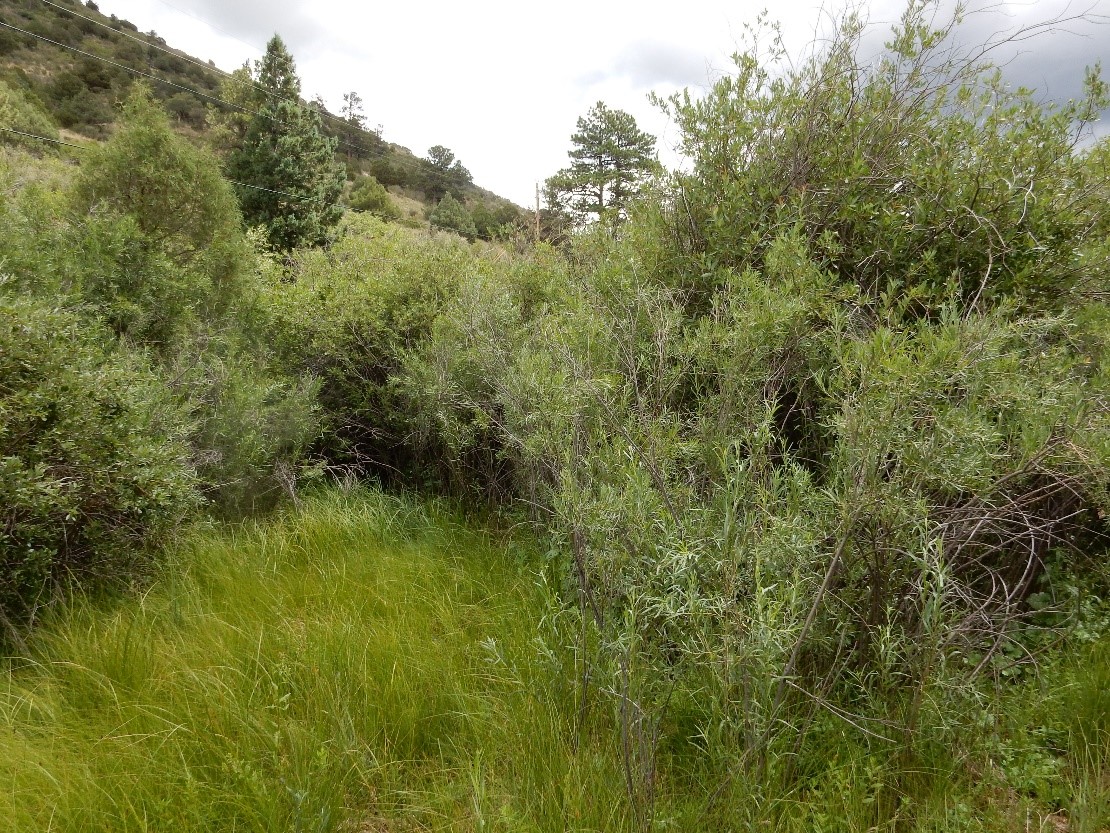New Mexico Rapid Assessment Method (NMRAM) Montane Riverine Wetlands Training
NMRAM Montane Riverine Wetlands
Montane Riverine Wetlands Field Guide Version 2.5 and worksheet packet
The New Mexico Rapid Assessment Method (NMRAM) Montane Riverine Wetlands Field Guide provides updated procedures for conducting a rapid ecological assessment of wetlands in the Montane Riverine Wetland subclass. The Field Guide provides specific protocols and datasheets for evaluating 14 wetland ecological condition metrics using a combination of Geographic Information System (GIS)-based measurements and field surveys. In addition to details on metric measurements, appendices are provided which include the data collection worksheets, a reference guide for taking some metric data, a plant species list with wetland indicator status, the state noxious weed list, photo-point guidelines and a glossary of terms.
Montane riverine wetlands occur along unconfined mountain streams and rivers at elevations between 6,000 and 8,500 ft and in the southern part of the state at elevations as low as 4,800 ft. They generally lie between the subalpine riverine and lowland riverine subclasses. The subclass includes mid-elevation, second- to fourth-order stream segments where valley widths generally exceed 80 m (262 ft) and have a channel width ranging from two to 10 m (6.6–33 ft). Channels have a low degree of confinement from the surrounding landscape and have room for lateral movement, leading to moderate sinuosity. Overbank flooding during peak flows plays a major role in developing and sustaining complex floodplains composed of point bars, terraces, and backwater channels which support the wetland communities. The Montane Riverine Wetland subclass also includes wetlands associated with montane riverine channel reaches exhibiting steeper channel slopes (2-4%), but still within a wide valley as a result of their geomorphic context.
Training Process Overview
View the training videos in the order listed below. You should also download and have available for review the Montane Riverine Wetlands NMRAM Field Guide Version 2.5 and worksheet packet. After watching each video it is recommended you review the relevant section of the Field Guide and practice entering test data into the associated worksheets. The relevant PowerPoint slide set for each video section is also available for download below to review while you are viewing the videos or for later reference.
- Introduction
- Landscape Metrics
- Buffer Integrity Index (video, slides) Includes the introduction to Landscape Metrics and the Buffer Integrity Index which is a measure of the amount of natural and semi-natural vegetated buffer lateral to the SA.
- Riparian Corridor Connectivity (video, slides) Riparian Corridor Connectivity measure the disruption of natural land connectivity upstream and downstream of the SA.
- Relative Wetland Size (video, slides) Relative Wetland Size is an index of the reduction of the current wetland size relative to its estimated historical extent.
- Surrounding Land Use (video, slides) Surrounding Land Use is the amount and intensity of human land use in the Land Use Zone (LUZ) surrounding the SA.
- Biotics Metrics
- Introduction - Field Reconnaissance and Mapping (video, slides) Introduction to biotic vegetation community patch mapping and data collection for all biotic metrics on worksheets 5 and 6.
- Relative Native Plant Community Composition (video, slides) Index of the abundance of native- versus exotic-dominated vegetation communities based on data collected with SA biotic map.
- Vegetation Horizontal Patch Structure (video, slides) Assessment of general vegetation patch diversity and complexity of patch pattern based on SA biotic map.
- Vegetation Vertical Structure (video, slides) Assessment of overall vertical structural complexity of the vegetation canopy layers across the SA.
- Native Riparian Tree Regeneration (video, slides) Abundance and spatial distribution of native riparian tree regeneration across the SA.
- Invasive Exotic Plant Species Cover (video, slides) Total percent cover for the SA of invasive plant species based on New Mexico list of noxious weeds.
- Abiotic Metrics
- Abiotic Channel and Floodplain Survey Overview (video, slides) Abiotic channel and floodplain survey used during collection of data for all Abiotic metrics.
Floodplain Hydrologic Connectivity (video, slides) Assessment of the ability of water to flow into or out of the wetland via survey for floodplain inundation indicators.
Additional Hydrologic Connectivity Resources from USDA: A Guide for Field Identification of Bankfull Stage in the Western United States (https://www.youtube.com/watch?v=UuS7H2NxJIM)
- Physical Patch Complexity (video, slides) Measure of the physical structural complexity of the SA that contributes to ecological richness.
- Channel Equilibrium (video, slides) Assessment of the degree of channel aggradation or degradation relative to reference equilibrium conditions.
- Stream Bank Stability and Cover (video, slides) Measure of stream bank soil/substrate stability and erosion potential that reflect overall stream bank stability.
- Soil Surface Condition (video, slides) Anthropogenic soil disturbance impacts within the SA.
- Stressors and Score Roll-Up
- Stressor Checklist (video, slides) Checklist of potential drivers of ecological condition at the local watershed scale (outside of the SA) that can inform management and understanding of SA condition scores.
- SA Condition Ranking (video, slides) Final SA condition score roll-up and final ranking procedures.




